How to create a really popular museum application using the example of “Weapons of Heroes”. Dedicated to Victory Day
Hello everyone and happy holiday! Today there was a reason to write about the project that we did last year for the Tula Museum of Weapons. This project took place only thanks to the efforts of a large number of individuals and organizations. Therefore, I want to talk about him as a community project.
Its result was the game " Weapons of Heroes " and, as you probably already understood, it is dedicated to weapons.
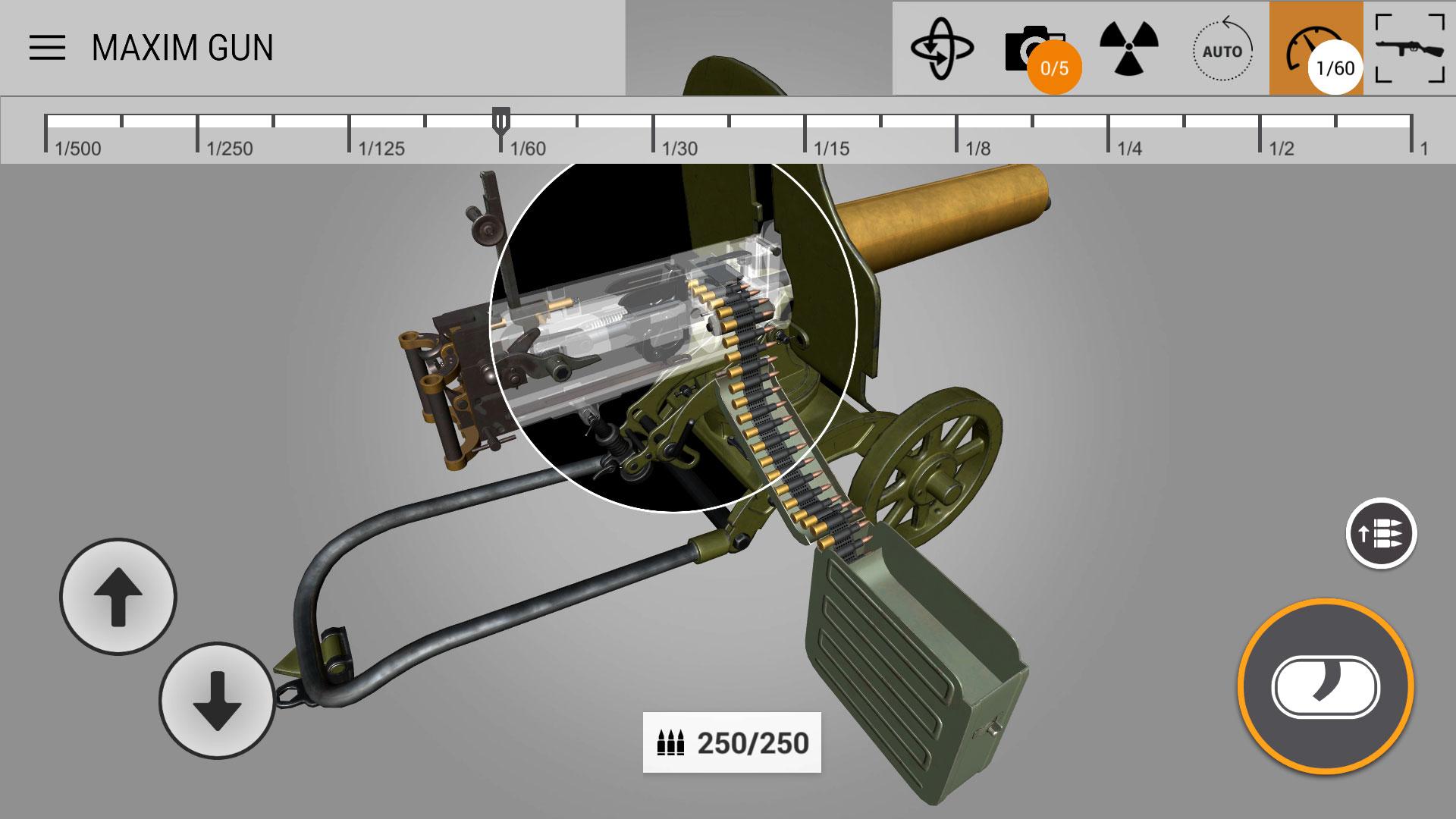
I would even say specifically to rare specimens of famous weapons exhibited in Tula.
Let's start from the end. The current state of the project is pretty well shown in this video, although it is already a little outdated in numbers.
We are followers of lean startup and the scientific method of knowing the world as a whole. Therefore, the project moved in stages, at each of which hypotheses were put to test and the infrastructure was created to collect the maximum amount of feedback.
Stage 1. From marketing to the first playable version. Experience son of difficult mistakes
In the summer of 2016, we were tasked with popularizing the weapons museum and its collection both in Russia and in the world. The museum is very interesting, but I personally visited it for the first time, when we already started development. The more interesting it was to convey it to people.
For 10 years, we have done dozens of projects about museums and each one was special, because museums are very different and the most important thing to understand at the start is why people really go to it. From a marketing point of view, these projects are always a big challenge.
Afterpainful doubts and painful deliberation of a theoretical test of hypotheses in the focus group, it was decided that a weapon simulator should be made in the museum setting. Such an application corresponded to the direction of Edutainment, which we liked ourselves and in which experience was gained.
At the same time, it was noted that the entertainment segment already contains a significant number of weapons applications, which we were regularly reminded of by critics. Our goal was to get an audience that plays games and is interested in weapons, but not to make a clone of famous applications. Let me remind you that our ultimate goal is to bring people to the museum and culture.
The annex contains 3 levels of bringing people to the museum:
1. Shoot from an interesting weapon
2. Collect disassemble it
3. Find out interesting facts and stories about these weapons
What were the advantages at the start:
- The project’s strength was undoubtedly access to one of the leading weapon museums. Thanks to this, we were able to show in the application exclusives such as Catherine 2 carbine or Maxim’s first serial machine gun
- The team had extensive experience in interactive visualization of anything on Unity3d in the amount of 200+ projects and several of them won international competitions
- We saw that the genre as a whole is popular and there is a potential target audience with an order of 1-10 million people
Cons:
- Among such a large number of existing projects it is very difficult to stand out and do something outstanding and attracting attention
- The absence in nature of really popular museum applications among the masses of people with an audience of 1 million +. This greatly cooled the fervor of all the people with whom we started at that time to discuss cooperation
- Not too successful experience with the gamification of museums in the world as a whole. We went to specialized museum events over the past 5 years, read a bunch of articles and even a couple of monographs by famous authors in an attempt to find really successful projects. Let's face it - they are vanishingly few. In our opinion, the main reason is that the project should be attended by professionals both from the side of the museum and from the side of the game developer. Some games show their time and culture much better than many initially educational applications.
- Tight deadline and budget. The first phase was carried out in the framework of state. contract with the Ministry of Culture of the Russian Federation. There was very little time to test hypotheses.
- There was no advertising budget in the project
An internal goal was set - to reach 1 million users in the first year. Seeing the current situation in the museum applications segment, it was clear that the existing approaches, this goal, to put it mildly, is not achievable. But as usual, I tell clients my doubts: “After developing the Olympic Games visualization system in 6 years 24x7 mode, it seems that nothing at all can confuse or surprise us.” Each of us has a project after which he discovered in himself abilities.
To work out the pros and cons, do not cover the project with a copper basin, the following action plan was adopted.
1. Choose 10 weapons from the museum, which are cult for most people and really draw attention to the museum application
2. Make a prototype within a month with the maximum quality of one weapon (PPSh-41) and the most basic functionality
3. Publish it on Google Play in Belarus and Kazakhstan and check the reaction of Central Asia according to analytics and reviews.
4. In parallel, do the rest of the weapons and functionality. Do not forget that we were under the state contract.
5. After the first iteration of testing the hypothesis, release every 2 weeks and check everything that comes inside the team and from users.
6. Make the application immediately to the international market, otherwise the necessary amount of traffic cannot be achieved.
Step 2. Cones of the first playable version or how programmers built an airplane.
The first release with a rigidly truncated basic functionality showed that our bet on the quality of 3D content turned out to be correct. The people were delighted.
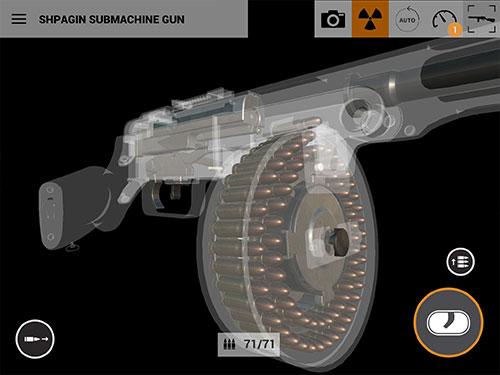
The following months, we passed the stages of the state contract, released almost every 2 weeks, made changes to the users feedback.
We completed the state contract on time, but there were more user requests than included the scope of the project. We decided to bring the matter to the end and see what would be the likelihood of producing this project. Then a fateful decision was made to develop the application only on Google Play, bring it to 1 million + users and only then go to the following platforms and talk with big uncles, which can be useful for the project.
Stage 3. The first release that inspired us or Operation Happy New Year
In late December, before the new year, the first big release happened, which really gave a lot of traffic. We went to 3-5 installations a day and are still somewhere at that level.
Here is the 1st release video. It was made in 20 languages. I had to write automation for unity3d production. 20 videos and 500+ screenshots - this is not only a marketing task, but also a technical one.
On New Year's Eve at its peak, the application had up to 18 thousand installations per day. On the one hand, it made us happy. Not even that. THIS US MEGAMOTIVATED ! But on the other hand, the ICRF servers did not manage to transfer all this volume of traffic to foreign users.
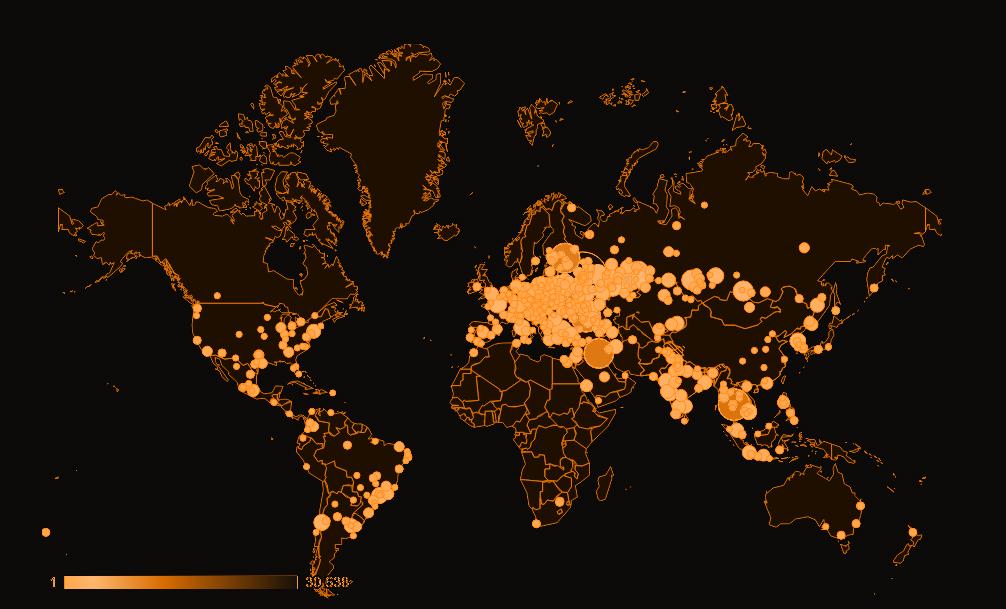
We had good experience working with Selectel by that time, and all distribution of internal downloads was transferred to their cdn. They were not always smooth, to be honest. But with their cost of services and partner Akamai - you can work and tasks are solved as needed.
At the same time, a program for beta testers was opened and 2 thousand people came to it. Apparently it turned out to submit the project with something more than just a game about weapons.
Volunteers began to come to the project. With their help, we translated the application into 10 languages, clarified some parts of the weapon and caught unobvious errors. And of course, they significantly improved the convenience of the interface.
Stage 4. Special release. Since February 23, men!
The next release happened on February 23. We added almost all the small wishlist of users, and everyone was very satisfied. Thanks to colleagues from Google for featured applications in the thematic collection! At this point, the application has passed about 20 different A / B testing on Google play. He changed the icon, which gave 2 times more conversion than the very first.
The description, short text and screenshots have changed. At this moment, we had a feeling of a real understanding of the audience and its real desires. But still, we continue to do testing regularly and were able to squeeze 10-20 percent conversion in some countries due to cultivation with beta users.
Stage 5. Release May 9th. Victory Day is a joy with tears in his eyes
The next big release was scheduled for May 9th. He had to bring the game into the game. Up to this point, the application was of course a simulator and successfully lived in the category Simulation games, but the user return was not as great as we would like. A large user survey was conducted, in which almost 11 thousand people participated. As a result of the survey, several areas were selected which, as a result, would give a playable application and lay down in the museum theme.
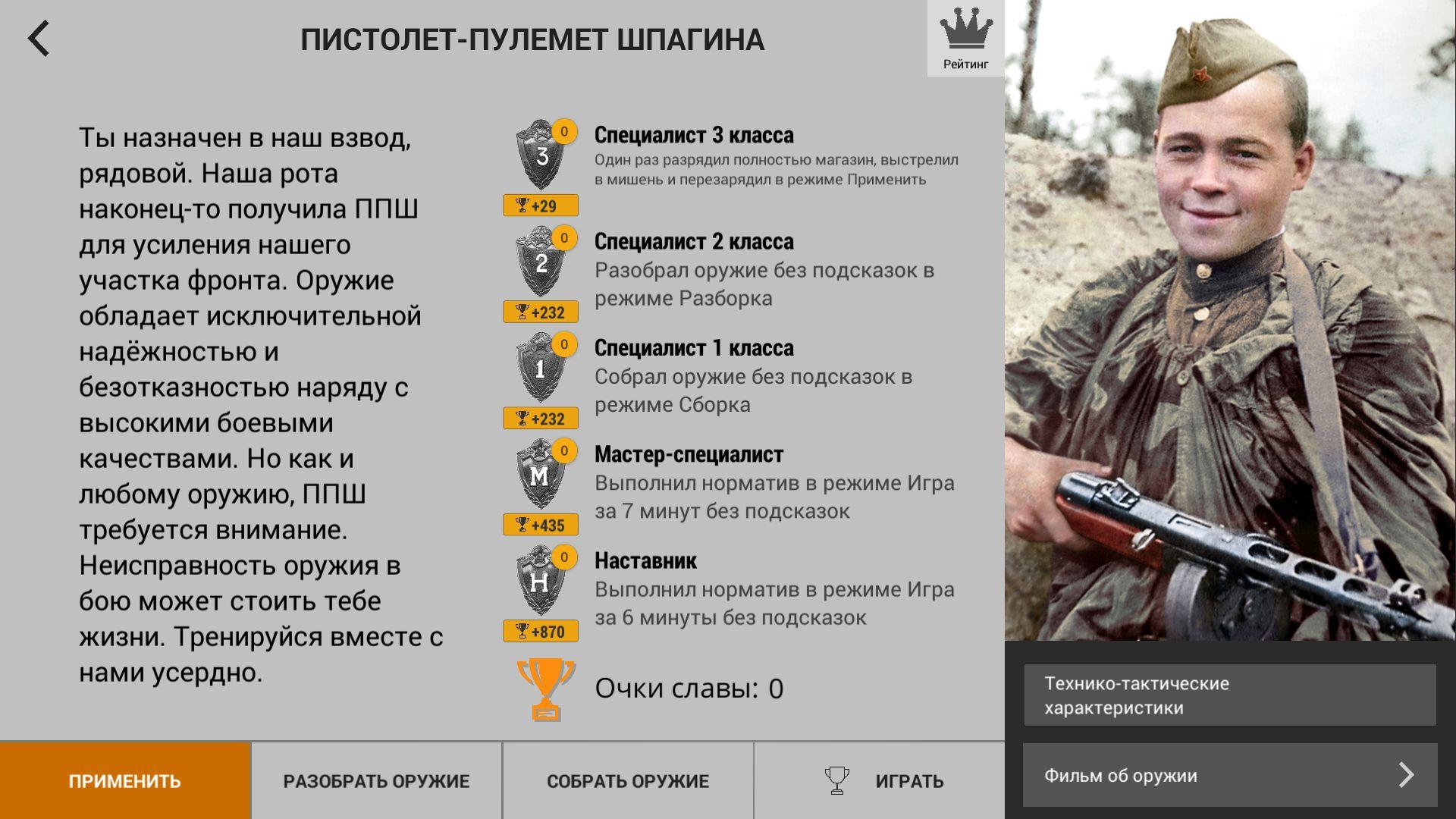
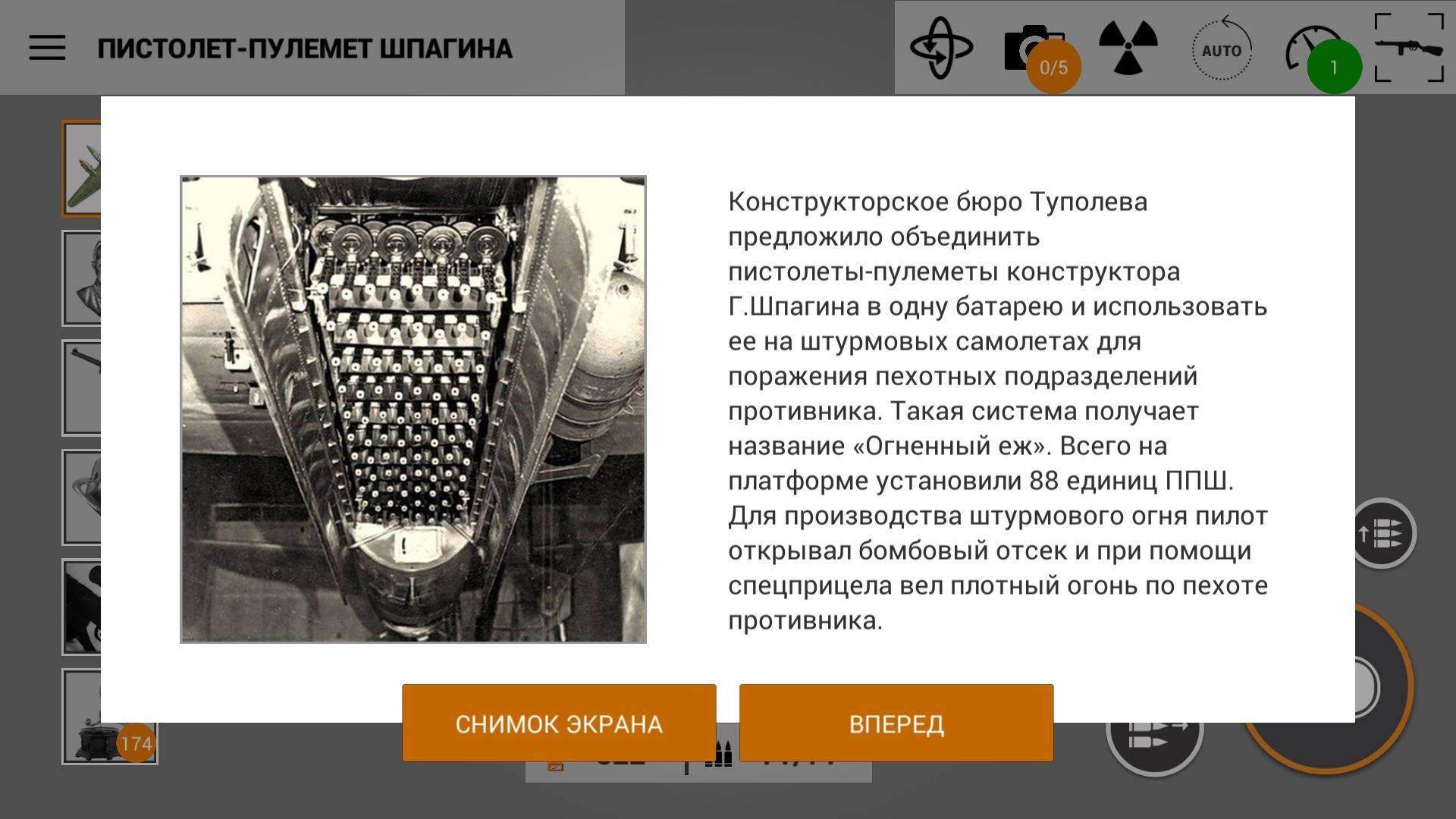
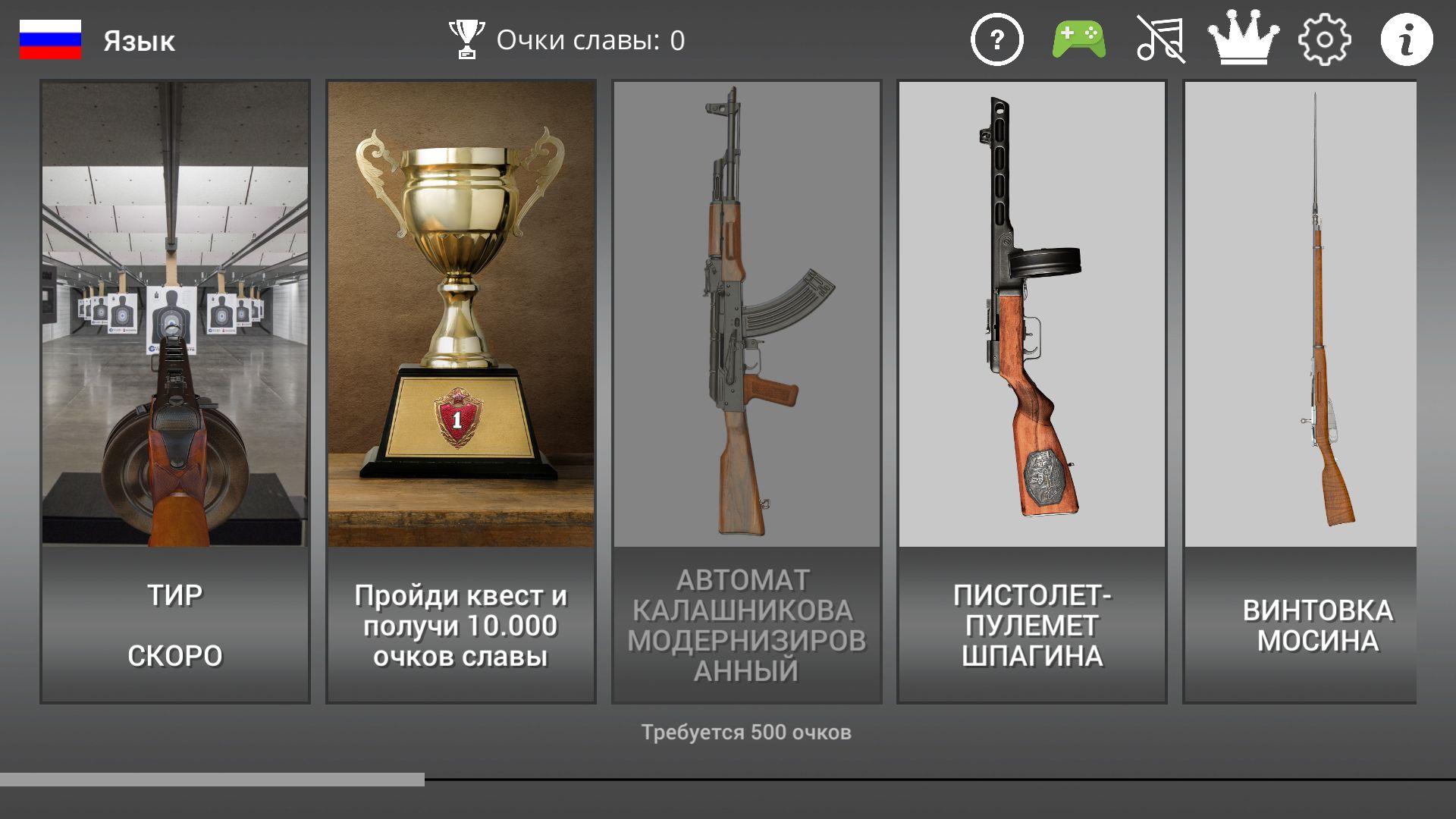
Drastically changing an already popular application is always exciting and even scary. Therefore, we strongly began to test all new features and mechanics on the beta group in advance. To our great joy, all that was done was accepted with a bang.
On May 4 there was a release, there was a feature on Google Play on May 9 and we launched a 10 day quest for our players.
As a result of the increase in the gaming component, the average time spent by people in the game increased by 3 times and the number of people who completely discovered all museum facts and reached full stories increased 5 times.
Summary
1. The task of popularizing the Tula weapons museum has been completed and exceeded. It turned out to make a live application for the mass user.
2. Now the game has 862 thousand installations in 4 months and 9 days. In June, if force majeure does not happen, then it will go for a million six months ahead of the plan. After that, the next phase of the project development will begin.
3. Other museums, including foreign whose employees are our users. So there may be new interesting patterns in the game.
Thanks to everyone who supported us and on Victory Day!
Its result was the game " Weapons of Heroes " and, as you probably already understood, it is dedicated to weapons.

I would even say specifically to rare specimens of famous weapons exhibited in Tula.
Let's start from the end. The current state of the project is pretty well shown in this video, although it is already a little outdated in numbers.
We are followers of lean startup and the scientific method of knowing the world as a whole. Therefore, the project moved in stages, at each of which hypotheses were put to test and the infrastructure was created to collect the maximum amount of feedback.
Stage 1. From marketing to the first playable version. Experience son of difficult mistakes
In the summer of 2016, we were tasked with popularizing the weapons museum and its collection both in Russia and in the world. The museum is very interesting, but I personally visited it for the first time, when we already started development. The more interesting it was to convey it to people.
For 10 years, we have done dozens of projects about museums and each one was special, because museums are very different and the most important thing to understand at the start is why people really go to it. From a marketing point of view, these projects are always a big challenge.
After
At the same time, it was noted that the entertainment segment already contains a significant number of weapons applications, which we were regularly reminded of by critics. Our goal was to get an audience that plays games and is interested in weapons, but not to make a clone of famous applications. Let me remind you that our ultimate goal is to bring people to the museum and culture.
Our hypothesis was something like this: “People who play weapons games will be interested in our game, while interacting with weapons in it, they will want to learn more about it and will go to the museum part of the game.”
The annex contains 3 levels of bringing people to the museum:
1. Shoot from an interesting weapon
2. Collect disassemble it
3. Find out interesting facts and stories about these weapons
What were the advantages at the start:
- The project’s strength was undoubtedly access to one of the leading weapon museums. Thanks to this, we were able to show in the application exclusives such as Catherine 2 carbine or Maxim’s first serial machine gun
- The team had extensive experience in interactive visualization of anything on Unity3d in the amount of 200+ projects and several of them won international competitions
- We saw that the genre as a whole is popular and there is a potential target audience with an order of 1-10 million people
Cons:
- Among such a large number of existing projects it is very difficult to stand out and do something outstanding and attracting attention
- The absence in nature of really popular museum applications among the masses of people with an audience of 1 million +. This greatly cooled the fervor of all the people with whom we started at that time to discuss cooperation
- Not too successful experience with the gamification of museums in the world as a whole. We went to specialized museum events over the past 5 years, read a bunch of articles and even a couple of monographs by famous authors in an attempt to find really successful projects. Let's face it - they are vanishingly few. In our opinion, the main reason is that the project should be attended by professionals both from the side of the museum and from the side of the game developer. Some games show their time and culture much better than many initially educational applications.
- Tight deadline and budget. The first phase was carried out in the framework of state. contract with the Ministry of Culture of the Russian Federation. There was very little time to test hypotheses.
- There was no advertising budget in the project
An internal goal was set - to reach 1 million users in the first year. Seeing the current situation in the museum applications segment, it was clear that the existing approaches, this goal, to put it mildly, is not achievable. But as usual, I tell clients my doubts: “After developing the Olympic Games visualization system in 6 years 24x7 mode, it seems that nothing at all can confuse or surprise us.” Each of us has a project after which he discovered in himself abilities.
To work out the pros and cons, do not cover the project with a copper basin, the following action plan was adopted.
1. Choose 10 weapons from the museum, which are cult for most people and really draw attention to the museum application
2. Make a prototype within a month with the maximum quality of one weapon (PPSh-41) and the most basic functionality
3. Publish it on Google Play in Belarus and Kazakhstan and check the reaction of Central Asia according to analytics and reviews.
4. In parallel, do the rest of the weapons and functionality. Do not forget that we were under the state contract.
5. After the first iteration of testing the hypothesis, release every 2 weeks and check everything that comes inside the team and from users.
6. Make the application immediately to the international market, otherwise the necessary amount of traffic cannot be achieved.
Step 2. Cones of the first playable version or how programmers built an airplane.
The first release with a rigidly truncated basic functionality showed that our bet on the quality of 3D content turned out to be correct. The people were delighted.

All that could be hung with statistics. Native Google Play Store, Google Analytics and Unity analytics
The following months, we passed the stages of the state contract, released almost every 2 weeks, made changes to the users feedback.
We completed the state contract on time, but there were more user requests than included the scope of the project. We decided to bring the matter to the end and see what would be the likelihood of producing this project. Then a fateful decision was made to develop the application only on Google Play, bring it to 1 million + users and only then go to the following platforms and talk with big uncles, which can be useful for the project.
Stage 3. The first release that inspired us or Operation Happy New Year
In late December, before the new year, the first big release happened, which really gave a lot of traffic. We went to 3-5 installations a day and are still somewhere at that level.
Here is the 1st release video. It was made in 20 languages. I had to write automation for unity3d production. 20 videos and 500+ screenshots - this is not only a marketing task, but also a technical one.
On New Year's Eve at its peak, the application had up to 18 thousand installations per day. On the one hand, it made us happy. Not even that. THIS US MEGAMOTIVATED ! But on the other hand, the ICRF servers did not manage to transfer all this volume of traffic to foreign users.

We had good experience working with Selectel by that time, and all distribution of internal downloads was transferred to their cdn. They were not always smooth, to be honest. But with their cost of services and partner Akamai - you can work and tasks are solved as needed.
At the same time, a program for beta testers was opened and 2 thousand people came to it. Apparently it turned out to submit the project with something more than just a game about weapons.
Volunteers began to come to the project. With their help, we translated the application into 10 languages, clarified some parts of the weapon and caught unobvious errors. And of course, they significantly improved the convenience of the interface.
Stage 4. Special release. Since February 23, men!
The next release happened on February 23. We added almost all the small wishlist of users, and everyone was very satisfied. Thanks to colleagues from Google for featured applications in the thematic collection! At this point, the application has passed about 20 different A / B testing on Google play. He changed the icon, which gave 2 times more conversion than the very first.
The description, short text and screenshots have changed. At this moment, we had a feeling of a real understanding of the audience and its real desires. But still, we continue to do testing regularly and were able to squeeze 10-20 percent conversion in some countries due to cultivation with beta users.
Stage 5. Release May 9th. Victory Day is a joy with tears in his eyes
The next big release was scheduled for May 9th. He had to bring the game into the game. Up to this point, the application was of course a simulator and successfully lived in the category Simulation games, but the user return was not as great as we would like. A large user survey was conducted, in which almost 11 thousand people participated. As a result of the survey, several areas were selected which, as a result, would give a playable application and lay down in the museum theme.



Since the project was no longer paid by anyone, it became a kind of hobby for our team. We did it in our free time, and everyone tried everything in it that was interesting to him. On it, we understood in practice why Google encourages such projects of its developers.
Drastically changing an already popular application is always exciting and even scary. Therefore, we strongly began to test all new features and mechanics on the beta group in advance. To our great joy, all that was done was accepted with a bang.
On May 4 there was a release, there was a feature on Google Play on May 9 and we launched a 10 day quest for our players.
As a result of the increase in the gaming component, the average time spent by people in the game increased by 3 times and the number of people who completely discovered all museum facts and reached full stories increased 5 times.
Summary
1. The task of popularizing the Tula weapons museum has been completed and exceeded. It turned out to make a live application for the mass user.
2. Now the game has 862 thousand installations in 4 months and 9 days. In June, if force majeure does not happen, then it will go for a million six months ahead of the plan. After that, the next phase of the project development will begin.
3. Other museums, including foreign whose employees are our users. So there may be new interesting patterns in the game.
Thanks to everyone who supported us and on Victory Day!
